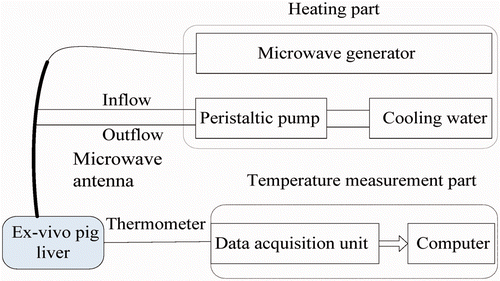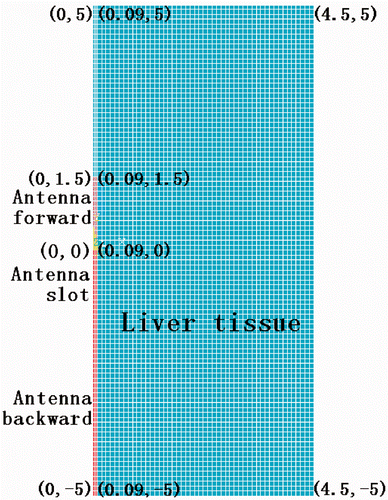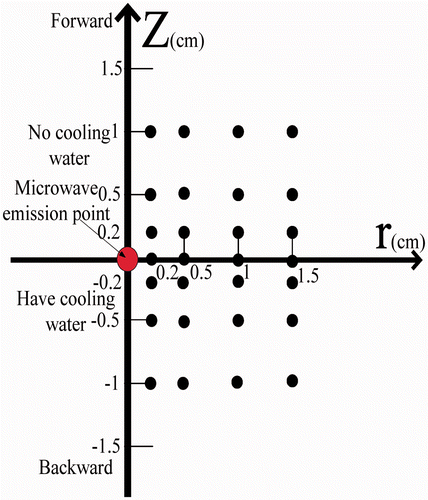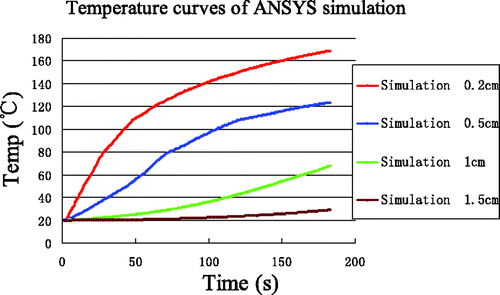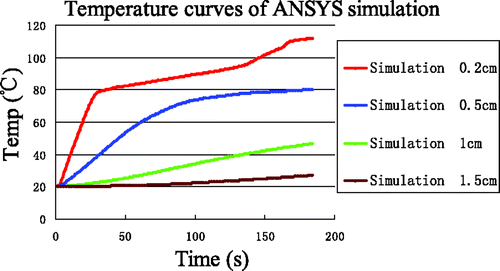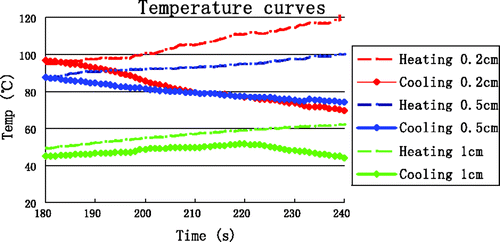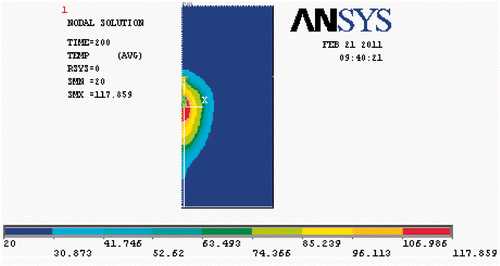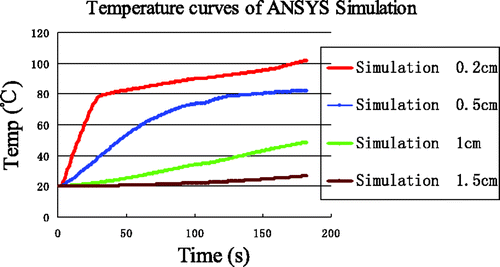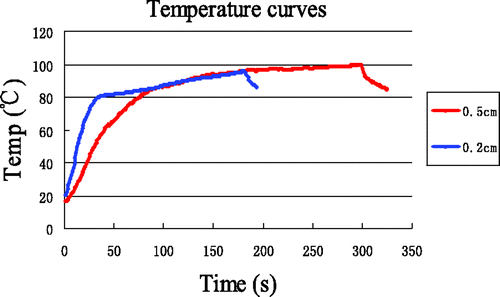Figures & data
Figure 1. The heating system, including (a) peristaltic pump, (b) MW generator, (c) water-cooled antenna, (d) MW radiator.

Table I. Thermal properties of ex vivo porcine livers.
Table II. Thermal-physical parameters of MW antenna.
Table III. dT/dt data at each TC.
Figure 5. Measured temperature curves at the four reference points. The arrows identify the end of each time interval.
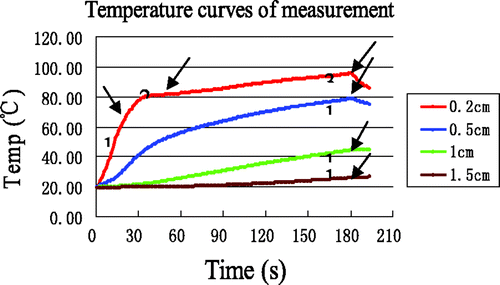
Table IV. The errors for temperature measurement data.
Figure 7. Comparison between simulation and experiment. Curves without markers are experimental measurements. Curves with markers are from computer simulation. The arrows identify the end of each time interval.
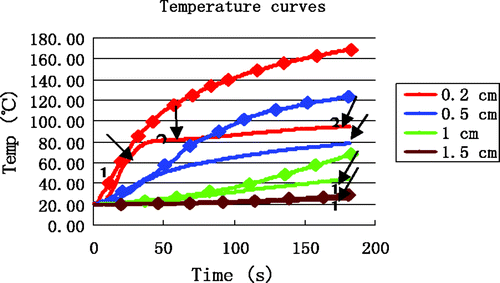
Table V. The errors between simulation and measurement.
Table VI Enthalpy values of ex vivo porcine liver.
Figure 9. Comparison between simulation with enthalpy considerations and experiment. Curves without markers are measurements. Curves with markers are results from computer simulation. The arrows identify the end of each time interval.
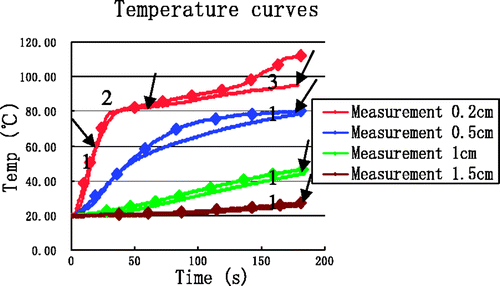
Table VII. The errors between simulation incorporating enthalpy and experimental data.
Table VIII. data from TCs near the MW antenna.
Figure 13. Comparison between simulation incorporating enthalpy and high-temperature SAR with experimental data. Curves without markers are measurements. Curves with markers are from computer simulation. The arrows identify the end of each time interval.
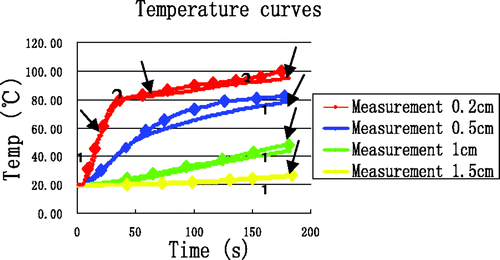
Table IX. The errors between simulations including enthalpy and high-temperature SAR and measurements.
Figure 15. Comparison between simulation based on the proposed thermal model and experiment. Curves without markers are experimental results. Curves with markers are from computer simulation. The arrows identify the end of each time interval.
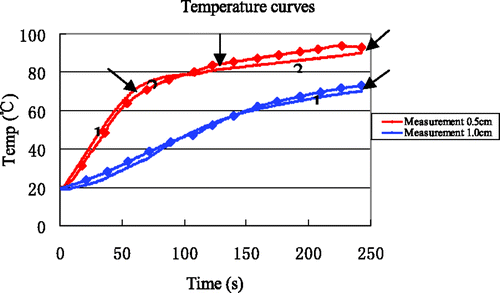
Table X. The errors between simulation and measurements.
